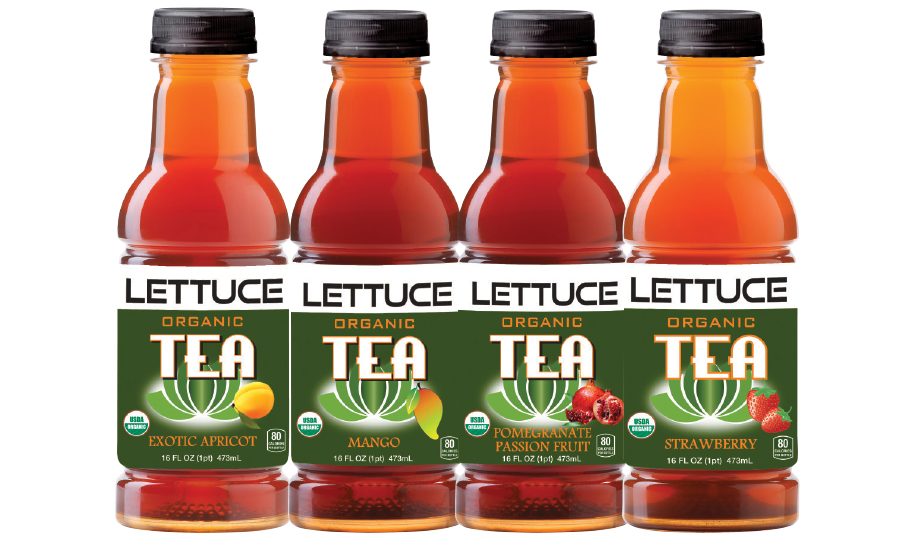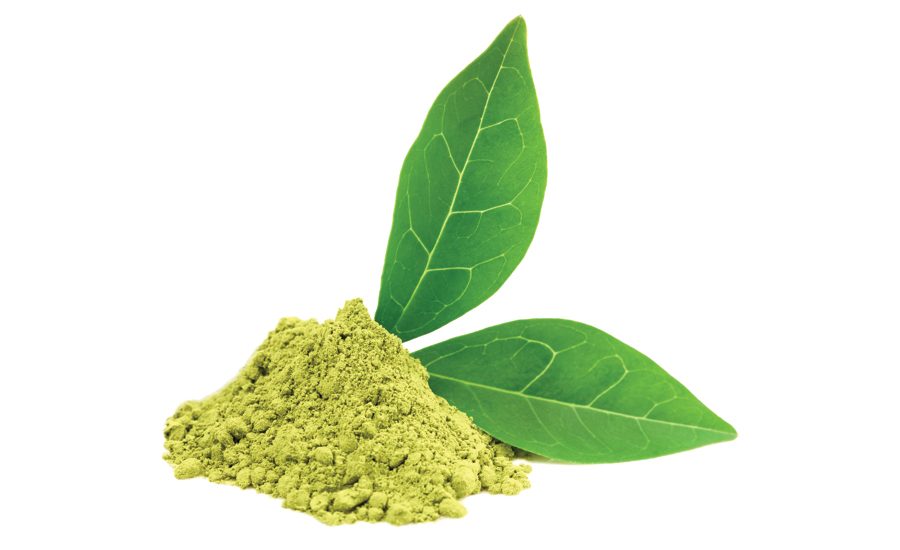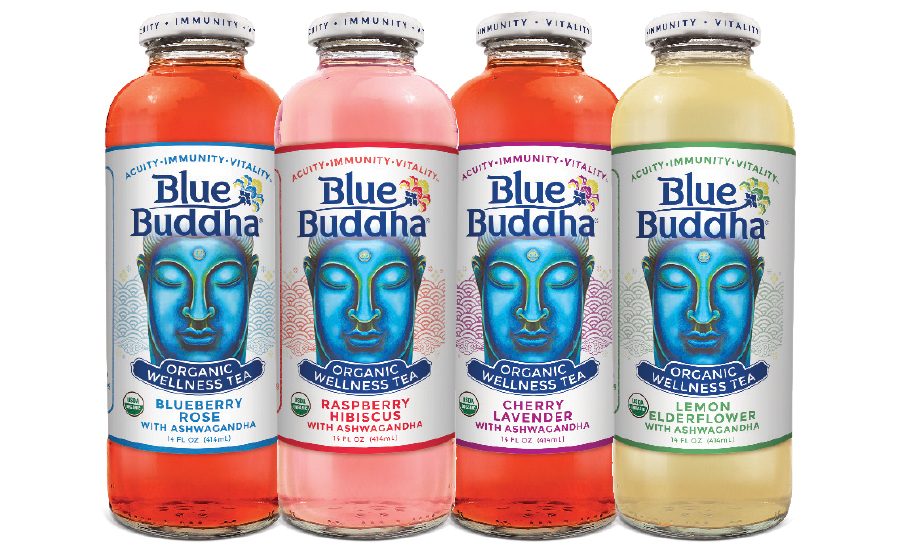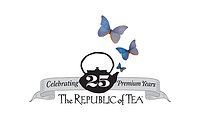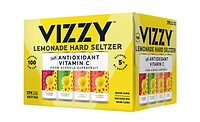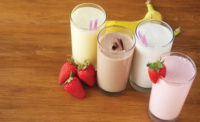Once a beverage intended for at-home brewing, tea has seen opportunities open up through ready-to-drink (RTD) applications. As consumers continue to lead on-the-go lifestyles, requests for these products have climbed.
“The tea market as a whole is on the rise, thanks largely to increased activity in the RTD segment,” says Victoria Ward, marketing and consumer insights manager for Philadelphia-based David Michael & Co., part of the International Flavors & Fragrances (IFF) family. “Brands are responding to consumer demand for wellness, variety and premiumization in this category. Millennials are a significant driving force behind this growth as they consume tea frequently, are on the hunt for health benefits ‘on-the-go,’ and tend to be very experimental and adventurous when it comes to their beverage choices. While RTD is experiencing a boom, hot tea is also looking to premium options and flavor innovation in the hopes of reinvigorating retail sales.”
Angie Lantman, applications manager with Synergy Flavors Inc., Wauconda, Ill., also highlights the growth of RTD tea. “The tea market continues to grow,” she explains. “As [carbonated soft drinks] (CSDs) continue to decline, the tea market continues to increase in its market share. Consumers still want beverages that contain caffeine and flavor varieties, but with a healthier profile. The RTD tea market is helping to fill in the gap left by the declining CSD market. It can be difficult to brew tea on a large scale, so many beverage companies are choosing to use tea extracts, flavors [and] powders to create these beverages instead of trying to brew and bottle [them] on a large scale.”
Lantman adds that utilizing tea extracts and flavors makes it easier to create consistent products for large-scale productions. “Balancing the right tea strength, flavor profile, color, functionality, etc., can be a challenge, but also ensuring stability of the tea solids can add extra challenges,” she says. “Working closely with the tea supplier to ensure the right balance of tea extract with the other ingredients is key to creating a RTD tea.”
Because of these production benefits, more beverage-makers are turning to tea extracts, experts note.
“Tea extracts continue to increase in utilization, especially within the growing RTD market, as more brands introduce new RTD tea beverages,” says Heidi McCormack, marketing manager with Finlay Extracts & Ingredients USA Inc., Lincoln, R.I.
Healthy association
Although the growing sales of RTD beverages have contributed to the increased usage of tea ingredients, the market also has benefited from increased awareness about health-and-wellness benefits and tea's positive consumer perception, experts note.
“The overall tea market continues to grow as tea continues to gain positive consumer perception as a healthy beverage option,” McCormack explains. “Consumers are beginning to understand tea for the possible health benefits that are often associated with it. In addition, tea is a versatile product in how it can be positioned as a pick-me-up for caffeinated offerings or a relaxing way to unwind for decaffeinated offerings.”
Randy Kreienbrink, vice president of marketing for BI Nutraceuticals, Long Beach, Calif., adds that tea’s association with from-nature trends is contributing to its growing popularity.
“I would say the reasoning that the extracts, tea powders and flavors are growing is all part of what’s going on in the beverage and food industry with clear, clean transparent labels,” he says. “People are looking at more products that are going back to Mother Earth, if you will.”
Kreienbrink notes that more consumers are turning to products that contain ingredients that they recognize. “[B]otanicals and tea extracts all have that clean, clear-label ring to them when they’re on a label,” he says. “I think that alone has increased the popularity of these types of products, especially with the millennial group growing and purchasing a lot of these types of products.”
Noting the popularity of BI Nutraceuticals’ green tea ingredients, Kreienbrink says that the health properties and caffeine content make the ingredient a popular choice for beverage-makers. “People are very aware of green tea, and they know the attributes of the polyphenols and catechins that are part of green tea,” he says. “They also are aware that there is some caffeine in the product … but I would say the main levels, if anything, is they’re shelf stable because they still fit that category of being clear, clean label and closer to Mother Earth.”
Michael Springsteen, vice president of business and product development for Brooklyn, N.Y.-based Virginia Dare, explains that the trend toward using fewer ingredients that come from nature aligns well with tea ingredients.
“Consumers are demanding products formulated with fewer ingredients and that are made from natural ingredients that they are familiar with,” he says. “The consumer trend today is strongly in favor of cleaner labels in healthier beverages devoid of artificial ingredients, sweeteners, colors and preservatives, and that can also be organic, natural, and free from various consumer-chosen preferences, such as GMO, gluten, trans fat, and high-fructose corn syrup free.
“Tea, as a beverage, has a simple and unique position: it is a natural product that comes from an agricultural source,” Springsteen continues. “It has a healthy perception and fits so well within what today’s consumer is looking for in a healthy beverage.”
Springsteen adds that research papers presented at the U.S. Department of Agriculture’s 5th International Symposium on Tea and Human Nutrition highlighted the benefits of tea, which included weight management, cognitive performance, cardiovascular health and cancer prevention.
Field of choices
Beyond the healthy properties associated with tea, the plethora of varietals from which to choose also is helping the ingredient’s growth.
“There is increased demand for black and green tea in iced tea and RTD tea in the U.S. market,” Finlays’ McCormack says. “Green tea has been trending up as it has significant association and perception of health benefits. Flavored black teas, like peach and blackberry, also continue to grow. Herbal teas are also trending due to their close association and perception of health benefits.”
David Michael’s Ward echoes similar sentiments. “Green and black teas continue to be go-to options for many U.S. tea drinkers,” she says. “Those who prefer strong-flavored teas tend to be devout black tea drinkers. Meanwhile, green tea has long been praised for its health benefits and is experiencing a surge in popularity thanks to the growing interest in matcha. While green and black teas have a stronghold, other varieties are inching their way up the sales charts.
“New-to-the-consumer tea varieties are a growing trend in the category right now, with a special focus on botanical ingredients and exotic fruit teas,” Ward continues. “In the herbal segment, hibiscus and rooibos are especially active as of late, while oolong and white teas are also making a name for themselves.”
Virginia Dare’s Springsteen notes that rooibos (red tea) is an herbal tea that is associated with many health benefits, which has aided its growth. “There is a continual, but slower pace of growth for rooibos tea,” he says. “Many consumers are not familiar with red tea, and its benefits have had generally less publicity than green tea.”
Blake Wester, senior applications scientist of beverages for Flavorchem Corp., Downers Grove, Ill., also notes the increased usage of herbal tea ingredients. “Hibiscus and other florals/botanicals are consistently increasing in popularity,” he says. “We have been working a lot with botanicals in beverages lately and keep getting requests for more concepts.”
Perhaps one of the most recent on-trend tea varietals has been matcha tea. “Over the last five or so years matcha launches have doubled,” David Michael’s Ward says. “Even though a cup of matcha has roughly half the caffeine of a cup of coffee, it’s how that caffeine is delivered to the drinker that makes it so special. The energy jolt is said to be more sustained and lasts longer and more intensely compared to coffee. This unique energy boost, the myriad health benefits and a smooth flavor profile are elevating matcha to celebrity status.”
Tea makers have been utilizing matcha as a standalone and product extension. “In some cases, matcha tea is its own product in its own category,” Synergy’s Lantman says. “In other cases, it is a flavor extension to the green teas already in that space. It is definitely an emerging trend.”
However, ingredient suppliers warn that the health benefits of matcha tea should not outweigh some of the formulation challenges that could come with it. “Matcha in its liquid consumable form is a suspension and not an infusion, so the designer of the beverage has to take into consideration that it will fall out after time and brown, thus losing the pretty green color,” Flavorchem's Wester says.
Formula for success
As more beverage-makers look to incorporate tea into their portfolios, they must take into account some important formulation principles, experts note.
“Micro issues are always a big consideration when working with tea, especially if you are using actual tea and not an extract,” Wester says. “... [W]hen using leaves, pasteurization parameters must be well thought out. With extracts and powdered teas, you can use chemical preservatives but usually higher levels are required.”
Taste also can be factor, especially with the growing segments like green tea. To help beverage-makers, Virginia Dare developed its Taste Foundations program, which offers the product developer terroir variety and a tool kit of tea ingredients that are designed for technical agility, Springsteen says.
“Many consumers want to take advantage of the health and weight loss benefits associated with green tea, but find the green-grassy taste less appealing than that of the more common flavored black tea RTDs,” he says. “Virginia Dare has successfully developed combined synergistic fruit and indulgent flavors with green tea to make green tea RTD beverages much more appealing to a wider range of American consumers.”
Despite the challenges that beverage formulators can encounter working with tea, the future for this ingredient continues to look bright.
“I think it’s going to continue to grow globally,” BI Nutraceuticals’ Kreienbrink says. “You’ll find ingredients and herbs that are not native or known to our U.S. market that are known elsewhere, whether it’s South America or Asia or around Europe, that we’ll see brought over from overseas, so that might hit the trends and will be popular in the future.”
Finlays’ McCormack also foresees more opportunities for tea ingredients in the United States. “We also expect to see more focus on the quality of the tea ingredients and, as a result of this, tea beverages will need to have good flavor as a result of the tea itself and not masked by sugar and flavoring,” she says. “There is room for more innovation in tea beverages, especially in how categories are blurring.” BI
